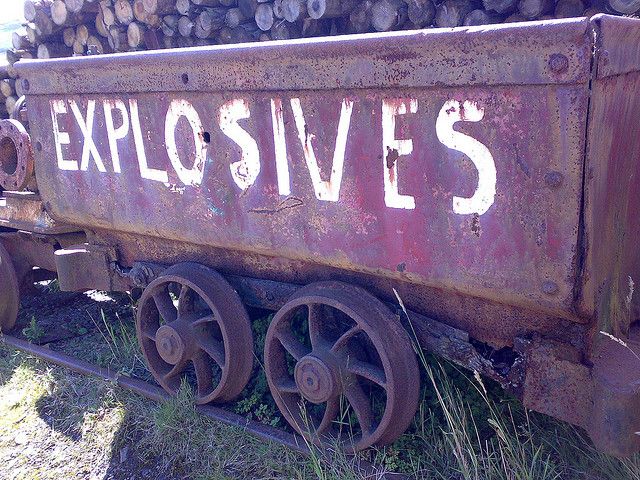New Bomb-Detecting Ink Could Thwart Terrorists

Restrictions on the amount of liquid allowed on airplanes departing from the United States could be a thing of the past thanks to a new material that can detect small amounts of an explosive commonly used by terrorists.
Made of tiny metal-oxide particles mixed into an ink, the new material starts out blue and turns yellowish or clear when it contacts peroxide-based explosives, which have been used in the past by terrorists, in particular in the 2005 London subway bombings. These explosives were also used by the thwarted "shoe bomber," who tried to detonate this substance onboard an airplane.
“The main problem here are these improvised explosives, especially peroxide-based explosives, which can be synthesized using ingredients available at your local grocery store and the recipe for these are available on the Internet, said Shoaib Shaikh, co-founder and CEO of XploSafe, a start-up company created to commercialize the ink technology. “The terrorists favor these explosives versus traditional explosives, because traditional explosives are not as unstable as these,” Shaikh told InnovationNewsDaily. (Peroxide explosives can be set off easily by applying heat.)
XploSafe has developed several products based on this explosive-detecting ink. Test strips containing the ink, for example, could be dipped into liquids not meant for human consumption before passengers board a plane. For drinks, a special capillary tube filled with the ink could be placed into these liquids; the sample would be drawn up and the chemical reaction would take place inside the tube so as not to contaminate the drink.
While it’s not clear when we will see these little testers in airports, Shaikh says it could be as soon as six months. It will depend on several factors, including the pace that the company moves through the SECURE Program (System Efficacy through Commercialization, Utilization, Relevance and Evaluation), which is the equivalent of the FDA approval process for drugs for human use.
The research that led to the development of the explosive-detecting ink was funded initially by MIPT, the Memorial Institute for Prevention of Terrorism based in Oklahoma City, and subsequently by the National Science Foundation.
Allen Apblett, XploSafe co-founder and chief scientific officer, will detail the research today at the National Meeting & Exposition of the American Chemical Society (ACS).
Sign up for the Live Science daily newsletter now
Get the world’s most fascinating discoveries delivered straight to your inbox.
This story was provided by InnovationNewsDaily, a sister site to LiveScience.











